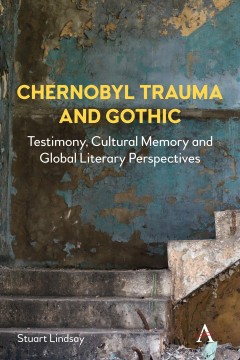Chernobyl Trauma and Gothic
Testimony, Cultural Memory and Global Literary Perspectives
By Stuart Lindsay
Other Formats Available:
E-Book- About This Book
- Reviews
- Author Information
- Series
- Table of Contents
- Links
- Podcasts
About This Book
This scholarly monograph synthesises critical understandings of collective social trauma and the Gothic’s discursive manifestation within the trauma paradigm in testimonial and literary expressions of the 1986 Chernobyl nuclear disaster. Gothic writing, more than just a historically specific manifestation of English eighteenth-century concerns about national identity and the French Revolution, functions as a textuality haunting that which it is not and an articulation of a society’s collective fears. Chernobyl Gothic, then, is a testimony, literature and aesthetics that haunts the empty space of the Soviet authority’s non-disclosure of the disaster, namely in the displaced survivor, the Exclusion Zone, and the exploded nuclear reactor housing. Chapters in this book examine the ways in which trauma and the Gothic coalesce around the writing of the Chernobyl disaster in various literary genres. Images of terror, fear and panic deployed satirically in Soviet Science Fiction published before the disaster portray a body politic in chaos and excess of Marxist homogeneity. Psychological hermeticism of individuals and social groups in Chernobyl testimony and fiction indicates the haunting of intergenerational trauma. Literature of international mourning, identifying in the Chernobyl eyewitness a lost subject who nevertheless survives and seemingly resists memorialisation, negotiates an ethics of exchange between self and other, visitor and native, living and dead. Cryptomimesis and mourning generate Gothic, uncanny effects within these texts through their ‘inside-outness’. This constitutes a pertinent Gothic structural aesthetics in analysing the traumas of a displaced network of survivors from a collapsed regime that nonetheless remains relevant in current geopolitics.
In the continued aftermath of disaster, technological representations of Chernobyl and the Exclusion Zone in the contemporary Gothic, namely in Virtual Reality and computer games, explore a discursivity of ghosts and monstrosity respectively.
Reviews
Author Information
Series
Anthem Studies in Gothic Literature
Table of Contents
Links
Stay Updated
Information
Latest Tweets



